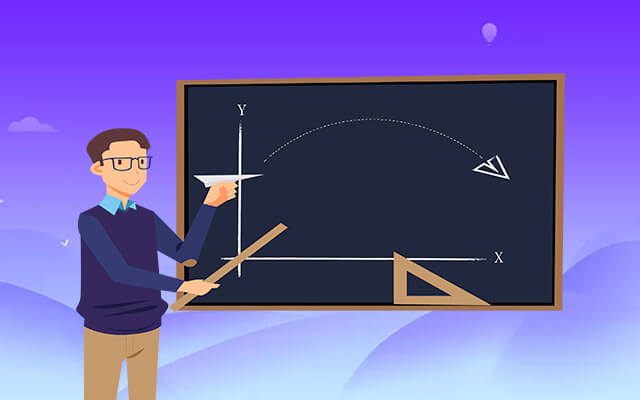剑桥雅思18共收集了雅思真题4套,羊驼雅思整理了第三套阅读真题答案及解析Test 3 Reading,以下是阅读第二篇文章Passage2的文章原文,供烤鸭们复习参考。

剑桥雅思18听力和阅读真题答案及解析汇总查看剑桥雅思18真题答案解析汇总,为助力考生们备考雅思,羊驼雅思APP推出剑桥雅思真题及答案解析视频,可在羊驼雅思APP课程一栏获取剑雅系列视频信息。
READING PASSAGE 2
You should spend about 20 minutes on Questions 14-26. which are based on Reading Passage 2 on pages 66 and 67.
The steam car
The successes and failures of the Doble brothers and their steam cars
A
When primitive automobiles first began to appear in the 1800s, their engines were based on steam power. Steam had already enjoyed a long and successful career in the railways, so it was only natural that the technology evolved into a miniaturized version which was separate from the trains. But these early cars inherited steam's weaknesses along with its strengths, The boilers had to be lit by hand, and they required about twenty minutes to build up pressure before they could be driven, Furthermore, their water reservoirs only lasted for about thirty miles before needing replenishment. Despite such shortcomings, these newly designed self-propelled carriages offered quick transportation, and by the early 1900s it was not uncommon to see such machines shuttling wealthy citizens around town.
B
But the glory days of steam cars were few, A new technology called the Internal Combustion Engine soon appeared, which offered the ability to drive down the road just moments after starting up. At first, these noisy gasoline cars were unpopular because they were more complicated to operate and they had difhcult hand-crank starters, which were known to break arms when the engines backfired. But in 1912 General Motors introduced the electric starter, and over the following few years steam power was gradually phased out.
C
Even as the market was declining, four brothers made one last effort to rekindle the technology. Between 1906 and 1909. while still attending high school, Abner Doble and his three brothers built their first steam car in their parents’ basement. It comprised parts taken from a wrecked early steam car but reconfigured to drive an engine of their own design.
Though it did not run well, the Doble brothers went on to build a second and third prototype in the following years. Though the Doble boys' third prototype, nicknamed the Model B, still lacked the convenience of an internal combustion engine, it drew the attention of automobile trade magazines due to its numerous improvements over previous steam cars.
The Model B proved to be superior to gasoline automobiles in many ways. Its high-pressure steam drove the engine pistons in virtual silence, in contrast to clattering gas engines which emitted the aroma of bured hydrocarbons, Perhaps most impressively, the Model B was amazingly swift, lt could accelerate from zero to sixty miles per hour in just ffteen seconds a feat described as 'remarkable acceleration' by Automobile magazine in 1914.
D
The following year Abner Doble drove the Model B from Massachusetts to Detroit in order to seek investment in his automobile design, which he used to open the General Engineering Company. He and his brothers immediately began working on the Model C, which was intended to expand upon the innovations of the Model B. The brothers added features such as a key-based ignition in the cabin, eliminating the need for the operator to manually ignite the boiler. With these enhancements, the Dobles’ new car company promised a steam vehicle which would provide all of the convenience of a gasoline car, but with much greater speed, much simpler driving controls, and a virtually silent powerplant. By the following April, the General Engineering Company had received 5.390 deposits for Doble Detroits, which were scheduled for delivery in early 1918.
E
Later that year Abner Doble delivered unhappy news to those eagerly awaiting the delivery of their modern new cars, Those buyers who received the handful of completed cars complained that the vehicles were sluggish and erratic, sometimes going in reverse when they should go forward. The new engine design, though innovative, was still plagued with serious glitches.
F
The brothers made one final attempt to produce a viable steam automobile. In early 1924. the Doble brothers shipped a Model E to New York City to be road-tested by the Automobile Club of America. After sitting overnight in freezing temperatures, the car was pushed out into the road and left to sit for over an hour in the frosty morning air. At the turn of the key, the boiler lit and reached its operating pressure inside of forty seconds.
As they drove the test vehicle further, they found that its evenly distributed weight lent it surprisingly good handling, even though it was so heavy. As the new Doble steamer was further developed and tested, its maximum speed was pushed to over a hundred miles per hour, and it achieved about ffteen miles per gallon of kerosene with negligible emissions.
G
Sadly, the Dobles’ brilliant steam car never was a financial success, Priced at around $18.000 in 1924. it was popular only among the very wealthy. Plus, it is said that no two Model Es were quite the same, because Abner Doble tinkered endlessly with the design. By the time the company folded in 193l, fewer than fifty of the amazing Model E steam cars had been produced. For his whole career, until his death in 196l, Abner Doble remained adamant that steam-powered automobiles were at least equal to gasoline cars, if not superior. Given the evidence, he may have been right. Many ofthe Model E Dobles which have survived are still in good working condition, some having been driven over half a million miles with only normal maintenance. Astonishingly, an unmodifed Doble Model E runs clean enough to pass the emissions laws in California today, and they are pretty strict.
It is true that the technology poses some difhcult problems, but you cannot help but wonder how efcient a steam car might be with the beneft of modern materials and computers. Under the current pressure to improve automotive performance and reduce emissions, it is not unthinkable that the steam car may rise again.
参考译文
蒸汽车
多布尔兄弟及其蒸汽车的成功与失败
A.
当原始汽车在19世纪首次出现时,它们的发动机是基于蒸汽动力的。Steam在铁路领域已经有了漫长而成功的职业生涯,因此该技术发展成为与火车分离的小型化版本是很自然的。但这些早期的汽车继承了蒸汽的缺点和优点,锅炉必须用手点燃,需要大约20分钟的时间来积聚压力才能行驶,此外,它们的水箱在需要补充之前只持续了大约30英里。尽管存在这些缺点,但这些新设计的自走式车厢提供了快速运输,到20世纪初,看到这样的机器在城里穿梭富有的市民并不罕见。
B
但蒸汽车的辉煌日子并不多,一种名为内燃机的新技术很快出现了,它可以在启动后不久就在路上行驶。起初,这些嘈杂的汽油车不受欢迎,因为它们操作起来更复杂,而且他们有不同的手摇曲柄起动器,众所周知,当发动机回火时,手摇曲柄起动器会折断手臂。但在1912年,通用汽车公司推出了电动起动机,在接下来的几年里,蒸汽动力逐渐被淘汰。
C
尽管市场在下滑,四兄弟还是做了最后一次努力来重新点燃这项技术。1906年至1909年间。还在上高中的时候,Abner Doble和他的三个兄弟在父母的地下室建造了他们的第一辆蒸汽车。它由从一辆失事的早期蒸汽车上取下的零件组成,但经过重新配置,可以驱动他们自己设计的发动机。
虽然运行不佳,但多贝尔兄弟在接下来的几年里继续建造了第二个和第三个原型。尽管多贝尔男孩的第三辆原型车,绰号B型,仍然缺乏内燃机的便利性,但由于它比以前的蒸汽车有了许多改进,它引起了汽车行业杂志的注意。
事实证明,B型车在很多方面都优于汽油车。它的高压蒸汽在几乎无声的情况下驱动发动机活塞,与发出打嗝碳氢化合物气味的哗啦声的燃气发动机形成鲜明对比。也许最令人印象深刻的是,Model B速度惊人,它可以在短短几十秒内从零加速到每小时60英里——这一壮举在1914年被《汽车》杂志称为“惊人的加速”。
D
第二年,Abner Doble驾驶B型车从马萨诸塞州前往底特律,以寻求对其汽车设计的投资,并以此开设了通用工程公司。他和他的兄弟们立即开始研发C型,旨在扩展B型的创新。兄弟们增加了机舱内基于钥匙的点火等功能,消除了操作员手动点燃锅炉的需要。通过这些改进,多布斯的新汽车公司承诺推出一款蒸汽车,它将提供汽油车的所有便利,但速度更快,驾驶控制更简单,动力装置几乎无声。到次年4月,通用工程公司已经收到了5.390笔Doble Detroits的押金,这些押金计划于1918年初交付。
E
那年晚些时候,Abner Doble向那些急切等待现代新车交付的人传达了一个不幸的消息。那些收到少数整车的买家抱怨说,这些车辆反应迟钝,不稳定,有时在应该前进的时候倒退。新的发动机设计虽然具有创新性,但仍然存在严重的故障。
F
兄弟俩最后一次尝试生产一辆可行的蒸汽汽车。1924年初。多布尔兄弟将一辆E型车运往纽约市,由美国汽车俱乐部进行路试。在冰冷的气温下坐了一夜后,汽车推到路上,在寒冷的早晨坐了一个多小时。钥匙一转,锅炉就亮了,并在四十秒内达到了工作压力。
当他们进一步驾驶测试车辆时,他们发现,尽管它很重,但其均匀分布的重量使其具有令人惊讶的良好操控性。随着新Doble蒸汽机的进一步开发和测试,其最大速度被提升到每小时100英里以上,每加仑煤油可行驶约15英里,排放量可以忽略不计。
G
遗憾的是,多布斯出色的蒸汽车从未在财务上取得成功,1924年的售价约为18000美元。它只在非常富有的人中流行。此外,据说没有两款Model E是完全相同的,因为Abner Doble对设计进行了无休止的修改。到1933年公司倒闭时,令人惊叹的E型蒸汽车只生产了不到50辆。在他的整个职业生涯中,直到1961年去世,Abner Doble一直坚信蒸汽动力汽车至少与汽油车相当,如果不是更优越的话。根据证据,他可能是对的。许多幸存下来的E型多臂车仍处于良好的工作状态,有些只经过正常维护就行驶了50多万英里。令人惊讶的是,一辆未经改装的Doble Model E运行得足够干净,可以通过今天加利福尼亚州的排放法,而且这些排放法非常严格。
诚然,这项技术带来了一些难题,但你不禁想知道,在现代材料和计算机的帮助下,蒸汽车的效率有多高。在目前提高汽车性能和减少排放的压力下,蒸汽车再次崛起并非不可想象。




